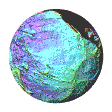
Welcome to Poorna Pal's Physical Oceanography class at the Glendale Community College


 |
Welcome to Poorna Pal's Physical Oceanography class at the Glendale Community College |
|||||||||
|
|
 |
|
||||||||
|
To update your science info, try: Scientific American | BBC Science Online | Nature | Science |
Updated on May 05, 2015 |
|
|
|
|||||||
|
|
|||||||||
|
|
|
|
|||||||
|
< |
Ocean basins and how they are created |
< |
The materials that fill the ocean basins |
||
|
u |
The world ocean |
and their properties |
|||
|
u |
Earth interior |
u |
Sediments | ||
|
u |
The sea-floor and its evolution | u | Seawater chemistry | ||
|
u |
Plate tectonics | u | Physics of seawater | ||
|
|
|||||
The Plate model and database at Institute for Geophysics - University of Texas at Austin allow users to make reconstructions from 750 Ma to present (www.ig.utexas.edu/research/projects/plates/plates.htm)
|
|
|
|
||
|
Poorna's Power-Point Slides |
|
Poorna's Handouts: |
||
|
|
|
|
||
|
|
|
|
||
|
|
|
|
||
|
|
|
|
||
|
|
|
|
||
|
|
|
|
 |
The World Ocean | ||
| 3 |
Click on this map to browse the HRW ocean floor atlas |
|
|
Click on this map for the interactive high resolution image of global ocean bathymetry at NOAA (National Ocean & Atmospheric Administration) Laboratory for Satellite Altimetry. |
4 | ||
|
|
|